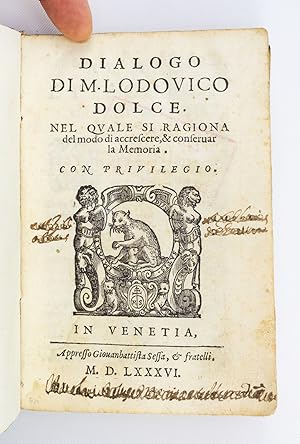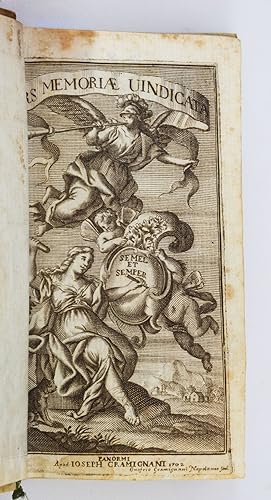mnemonics (2 Ergebnisse)
Suchfilter
Produktart
- Alle Product Types
- Bücher (2)
- Magazine & Zeitschriften (Keine weiteren Ergebnisse entsprechen dieser Verfeinerung)
- Comics (Keine weiteren Ergebnisse entsprechen dieser Verfeinerung)
- Noten (Keine weiteren Ergebnisse entsprechen dieser Verfeinerung)
- Kunst, Grafik & Poster (Keine weiteren Ergebnisse entsprechen dieser Verfeinerung)
- Fotografien (Keine weiteren Ergebnisse entsprechen dieser Verfeinerung)
- Karten (Keine weiteren Ergebnisse entsprechen dieser Verfeinerung)
- Manuskripte & Papierantiquitäten (Keine weiteren Ergebnisse entsprechen dieser Verfeinerung)
Zustand Mehr dazu
- Neu (Keine weiteren Ergebnisse entsprechen dieser Verfeinerung)
- Wie Neu, Sehr Gut oder Gut Bis Sehr Gut (Keine weiteren Ergebnisse entsprechen dieser Verfeinerung)
- Gut oder Befriedigend (Keine weiteren Ergebnisse entsprechen dieser Verfeinerung)
- Ausreichend oder Schlecht (Keine weiteren Ergebnisse entsprechen dieser Verfeinerung)
- Wie beschrieben (2)
Einband
- alle Einbände
- Hardcover (Keine weiteren Ergebnisse entsprechen dieser Verfeinerung)
- Softcover (Keine weiteren Ergebnisse entsprechen dieser Verfeinerung)
Weitere Eigenschaften
- Erstausgabe (1)
- Signiert (Keine weiteren Ergebnisse entsprechen dieser Verfeinerung)
- Schutzumschlag (Keine weiteren Ergebnisse entsprechen dieser Verfeinerung)
- Angebotsfoto (2)
Sprache (1)
Preis
- Beliebiger Preis
- Weniger als EUR 20 (Keine weiteren Ergebnisse entsprechen dieser Verfeinerung)
- EUR 20 bis EUR 45 (Keine weiteren Ergebnisse entsprechen dieser Verfeinerung)
- Mehr als EUR 45
Gratisversand
- Kostenloser Versand nach USA (Keine weiteren Ergebnisse entsprechen dieser Verfeinerung)
Land des Verkäufers
Verkäuferbewertung
-
DIALOGO DI M. LODOVICO DOLCE. NEL QUALE SI RAGIONA DEL MODO DI ACCRESCERE, & CONSERVAR LA MEMORIA
Verlag: appresso Giovanni Battista II Sessa & fratres, Venezia [Venice], 1586
Anbieter: Phillip J. Pirages Rare Books (ABAA), McMinnville, OR, USA
147 x 100 mm. (5 3/4 x 4"). 118, [1] leaves. Contemporary limp vellum, flat spine with title written in ink, newer (20th century?) endpapers. With eight half-page woodcuts in the text and 15 full-page woodcuts. Verso of title page with red ink "Duplicate" stamp of the library of Bernard Zufall. Young, "Bibliography of Memory," p. 91; Mortimer, Italian 157 (for 1562 edition, mentioning 1586 edition); EDIT16 CNCE 17422; USTC 827157. See also: Terpening, "Lodovico Dolce, Renaissance Man of Letters." ?Vellum a little wrinkled and somewhat soiled, but the simple binding still sound; first and last two quires with faint dampstain to lower quadrant, occasional minor browning or foxing, but still excellent internally, generally clean and fresh. Using charming woodcuts to help the reader visualize the methods described, this is a treatise on memory that explores how one can systematically employ various tricks and devices to increase retention and preserve information. The work is an Italian paraphrase in dialogue form of the "Congestorium Artificiose Memorie" by Johann Host von Romberch, printed by Giorgio de' Rusconi in 1520 and reprinted by the Sessa press in 1533; both of these earlier editions used the same blocks (except for that on f. H6r, which Mortimer notes is a "close copy" of the original) that appear in the present copy. Dolce's treatise was first printed by the Sessa brothers in 1562. Among the illustrations, there are three of special note: a cut of the human head, its cerebral cavity labelled with parts relevant to the memory; a row of 10 woodcut images of items to be found in a Renaissance library, as tools to be used in a memory system; and, perhaps most significant, a city view that includes the exterior of a bookstore, with books on display in the window. This cut is one of the earliest graphic depictions of the outside of bookselling premises to appear in a book. Italian writer and scholar Lodovico Dolce (1510? - 68) was a highly influential figure in 16th century Venetian art and literature. According to Terpening, Dolce was "responsible for over a quarter of the books published in Venice in his time," including works in most major genres, translations of Greek poetry and plays, and numerous original compositions. As such, he "played a decisive role in the dissemination of culture in the cinquecento." Today Dolce is chiefly remembered for his work "L'Aretino," a dialogue on painting and art criticism. The present copy comes from the library of magician and memory expert Bernard Zufall (1894-1971), known as the "Human Encyclopedia." Zufall amassed the largest known collection of books on mnemonics, in excess of 1,000 titles, which (except for duplicates like the present work) he donated to Yale University.
-
ARS MEMORIAE VINDICATA: ACCESSIT ARTIFICIUM POETICUM AD SCRIPTURAS DIVINAS IN PROMPTU HABENDAS
Verlag: Joseph Gramignami, Panormi [Palermo], 1702
Anbieter: Phillip J. Pirages Rare Books (ABAA), McMinnville, OR, USA
Erstausgabe
FIRST EDITION. 140 x 70 mm. (5 1/2 x 3"). 24 p.l., 225, [115] pp. Contemporary stiff vellum, smooth spine with gilt lettering. Added engraved allegorical title page, printer's device on printed title page, wood-engraved head- and tailpieces. Final [114] pages printed vertically. Verso of title page with red ink "Duplicate" stamp of the library of Bernard Zufall. âVellum lightly smudged and with slight crease at one corner, short, thin stain to text of two facing leaves, text versos with small inner margins, bottom edges of charts trimmed very close (sometimes just grazing text, but without costing any complete letters), isolated minor foxing and other trivial defects, but a generally clean and pleasing copy, without any fatal condition issue. This 18th century work on the art of memory comes from the library assembled by a magician known as the "Human Encyclopedia." Bernard Zufall (1894-1971) amassed what was considered to be the largest collection devoted to mnemonics, with more than 1,000 titles; he bequeathed all but a few duplicates (of which this is one) to Yale University. Giovanni Brancaccio (1673 - after 1738) was an attorney in Sicily who also took an interest in literature and medicine, and who had a special curiosity about memory. In this work, he cites feats of memory by historical figures, before presenting tips for memorizing Holy Scripture. This is a book rarely seen in the marketplace, and OCLC finds just eight copies in libraries, three of these in North America.



